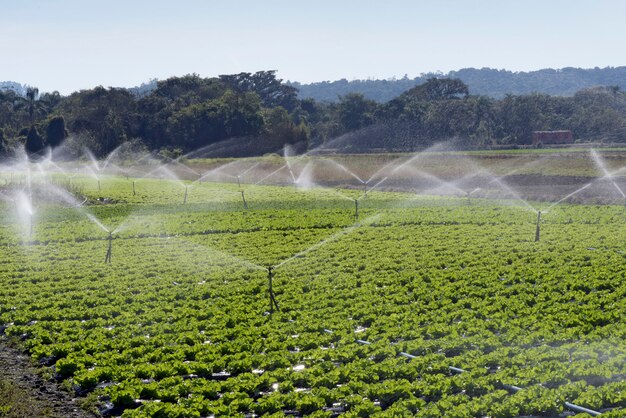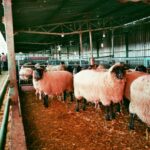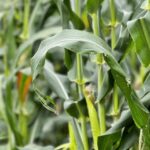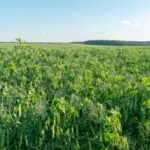Efficient irrigation systems are essential for South African farmers to maximize water use, promote healthy crop growth, and enhance yields. However, improper use or management of irrigation systems can lead to water wastage, uneven crop performance, and unnecessary expenses. Understanding and avoiding common mistakes can improve efficiency and ensure sustainable farming practices. Here are ten common mistakes farmers make when using irrigation systems and how to address them.
1. Neglecting Regular Maintenance
Farmers often overlook routine maintenance of irrigation systems, which leads to clogged pipes, malfunctioning emitters, or uneven water distribution. Without proper maintenance, the system may not deliver water efficiently, affecting crop health and productivity.
To avoid this mistake, inspect the system regularly for leaks, blockages, or wear and tear. Clean filters, flush pipes, and repair damaged components promptly.
2. Overwatering Crops
Overwatering is a common mistake that can damage crops, deplete nutrients from the soil, and waste water. Farmers sometimes assume more water leads to better yields, but excessive irrigation can cause root rot and reduce plant resilience.
Use soil moisture sensors or weather-based irrigation scheduling tools to determine the precise water needs of your crops. Monitor soil moisture levels and adjust irrigation accordingly.
3. Failing to Monitor Water Quality
Using poor-quality water for irrigation can harm crops and lead to soil degradation. Contaminants like salts, heavy metals, or pathogens can accumulate in the soil and reduce its fertility.
Regularly test your water source for pH, salinity, and contaminants. If necessary, use filtration systems or water treatment methods to improve water quality.
4. Ignoring Crop-Specific Water Needs
Different crops have varying water requirements depending on their growth stage, root depth, and sensitivity to drought. Applying a one-size-fits-all irrigation approach can result in water stress for some crops and over-irrigation for others.
Develop irrigation schedules tailored to the specific needs of each crop. Consider factors like soil type, weather conditions, and growth stages to optimize water application.
5. Improper Irrigation System Design
A poorly designed irrigation system can lead to uneven water distribution, dry patches, or excessive runoff. Mistakes in pipe sizing, emitter placement, or pressure regulation are common issues.
Work with irrigation specialists to design a system suited to your farm’s layout and crops. Ensure uniform water distribution by using appropriate emitters, sprinklers, or drip lines.
6. Operating the System During Windy Conditions
Wind can cause water from sprinklers to drift, leading to uneven irrigation and water wastage. Farmers sometimes operate their irrigation systems during high winds without realizing the impact.
Schedule irrigation during early morning or late evening when wind speeds are typically lower. This helps ensure that water reaches the intended areas and reduces evaporation.
7. Neglecting to Account for Soil Type
Soil type significantly influences water retention and infiltration rates. Ignoring these factors can result in under-irrigation or over-irrigation, depending on the soil’s characteristics.
Assess the soil type in each field and adjust irrigation schedules accordingly. Sandy soils require more frequent irrigation with smaller volumes, while clay soils benefit from less frequent but deeper watering.
8. Failing to Detect and Repair Leaks
Undetected leaks in pipes, valves, or emitters can lead to significant water loss and reduced irrigation efficiency. Many farmers underestimate the impact of small leaks over time.
Inspect the system regularly for leaks and repair them immediately. Installing pressure gauges or flow meters can help identify areas with unusual water usage.
9. Relying Solely on Manual Operation
Manual operation of irrigation systems is time-consuming and prone to human error. Farmers who rely on manual methods may over-irrigate some areas and under-irrigate others.
Invest in automated irrigation systems with timers or smart controllers. Automation ensures precise water application and saves time while reducing the risk of errors.
10. Disregarding Local Weather Conditions
Failing to consider rainfall or temperature fluctuations can lead to unnecessary irrigation. Over-irrigating during rainy periods wastes water and increases the risk of waterlogging.
Use weather forecasting tools and rain sensors to adjust irrigation schedules based on current conditions. Reduce irrigation during rainy periods and increase it during hot or dry spells.
Efficient irrigation is vital for sustainable farming, especially in water-scarce regions like South Africa. By avoiding these common mistakes, farmers can optimize water use, reduce costs, and improve crop yields. Regular system maintenance, tailored irrigation schedules, and modern technology are essential for achieving the best results. Proper irrigation practices not only support crop health but also contribute to long-term farm sustainability and resource conservation.
Join 'Farmers Mag' WhatsApp Channel
Get the latest Farming news and tips delivered straight to your WhatsApp
CLICK HERE TO JOIN






